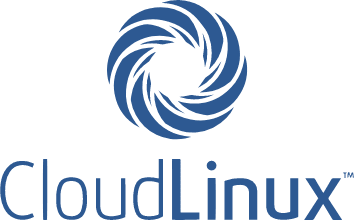
CloudLinux 7 is an operating system used by hosting providers, particularly those who offer shared hosting services. It was first released in 2010 and has completely changed how reliable shared hosting can be. CloudLinux is a Linux based system . It grew in popularity because of its ability to enable hosting providers to have greater control over the server resources.
The system does this by creating isolated instances of each account on a server. By doing this, each hosted account keeps its independence and performance isn’t impacted by the other accounts on the server. This multi-tenant approach also makes shared hosting significantly more secure. This creates an environment that behaves more like a virtual server than a traditional shared hosting account.

Let’s take a closer look at what could be considered the heart of the system - the - Lightweight Virtualized Environment (LVE). LVE is a kernal-based technology that supports the various functions CloudLinux 7 provides.
Through the LVE technology, a system manager will have access to monitor, manage, and control on a granular level the resources each hosted site utilizes. This not only lets you control resources on an account-by-account basis, it also can help you in the sales process.
When you can monitor specific usage, you can collect the data needed to support a sales attempt to move a hosted site to a higher service tier due to its’ usage needs. On the opposite side, it also allows you to establish, and have the data to backup, limitations for those sites that might be overreaching on their contracted hosting needs.

Many hosting system developers and server administrators have had to deal with headaches caused by MySQL. Part of the issue is on the development side, with keeping MySQL running with stability.
The other issue can arise from the interaction with users and the speed at which MySQL can handle those queries and return the requested answers. CloudLinux 7 addresses this concern with the implementation of the MySQL Governor Feature. This tool provides admins and devs real-time insight into the system and resource usage in regards to MySQL queries.
With a direct tie-in to MySQL and MariaDB, v7 tracks IO and CPU usage, looking for spikes or delays. When those are discovered the LVE technology is initiated to “tamp down” the overuse before a site slows down to an unusable point.

Experienced CloudLinux users will notice almost immediately the benefits that CageFS brings with v7. CageFS is a virtual filing system that helps keep each hosted site self-contained.
It also brings with it some advanced security features. Included among the attacks it can stand against privilege escalation and information disclosure attacks of service.
Even better, it offers this protection without a need to change scripts on a customer by customer basis.
CloudLinux 7 brings with it a number of upgrades and improvements over v6. These include the following:

Compatibility - When CloudLinux was first introduced, one of the aspects of it that immediately grabbed the attention of the hosting community was its ease of compatibility. CloudLinux 7 continues this tradition with easy connection to the cPanel along with other key hosting interfaces.
Conversion Ease - Hosting can be a complicated endeavor, but the development team behind CloudLinux has gone to great lengths to make the installation of their system easy. Whether you are upgrading from an earlier version of CloudLinux or converting from a system like RHEL or CentOS, the process is relatively straightforward.
Security - With a seemingly endless flow of news regarding the theft of data and server hi-jacking in the corporate world, security becomes an increasingly more visible concern. CloudLinux 7 comes with improved security features. The security of CloudLinux is not stagnant either. The development team is constantly monitoring threats such as malware and new hacking protocols, and releasing patches to keep ahead of the curve. The system also has an interesting lightweight virtualized environment (LVE) component. This keeps a sort of double-wall between your server and the outside world. In doing this, hackers are kept out but on the chance that one does break through, that second wall keeps information from getting out.
A “Bubble” - As we discussed earlier, the CloudLinux v7 system isolates each individual instance of a hosted account. This not only contains the users information, it protects its visibility from other users.
Dedicated Support - One of the most consistent things you’ll hear from users of a CloudLinux system is the strong 24/7 support that it brings with it. There are ready, dedicated, talented (and patient) tech support personnel, with a true development understanding, who can walk you through any step in the process.
The hosting power found in the CloudLinux system is forward-thinking and reliable. And the latest version of CloudLinux continues a tradition of service and support for hosting.
If you are ready to make the upgrade or have questions about how CloudLinux v7 can benefit you, contact us today.